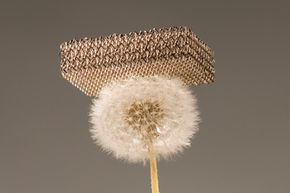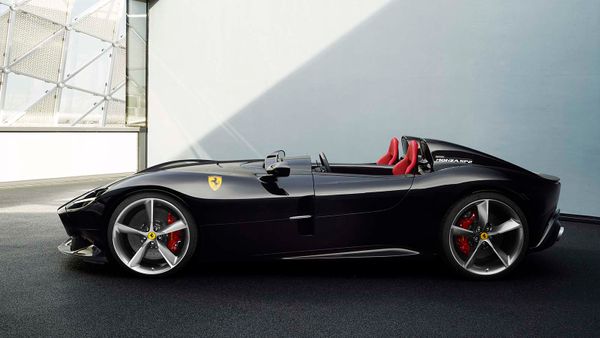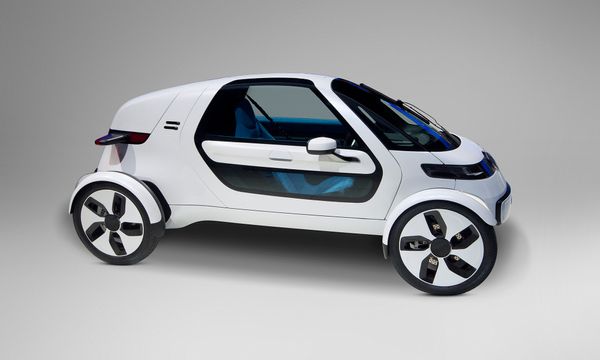Microlattice metal just sounds pretty, doesn't it? And the most popular picture demonstrating the lightweight nature of microlattice metals is of a little piece of the material perched atop a fluffy dandelion head. Cute!
And, because each hollow strand of laser-cut nickel is thinner than a human hair, the structure of the material is 99.99 percent air. Air! Imagine holding an empty Styrofoam cup in one hand and a cup made of microlattice metal in the other. The metal cup would be lighter.
Advertisement
The magic -- and strength -- is in the laser cutting. The structure of the material was developed by University of California-Irvine, CalTech, and HRL Laboratories for DARPA (the defense department's geekiest research arm), to absorb stress and bounce back. It can be compressed to half its volume and it'll spring right back to its original shape.
This could potentially revolutionize car manufacturing. Picture it: A car body lighter than the same design made of Styrofoam, yet able to absorb an impact and return to its proper form. Lighter cars mean less drag and better fuel efficiency, and the ability to absorb so much energy is an obvious safety plus, too. Parking lot door dings would be a thing of the past.
DARPA seems to think there are other uses for microlattice metals (besides building awesome featherweight cars), like aeronautic engineering and design, energy harvesting systems, building a better battery and even just as a damping material -- since it can absorb acoustic, shock and vibration energy.
Of course, this stuff is still pretty experimental. But someday ... just maybe, we'll all be parking our cars on the heads of dandelions.
Advertisement


